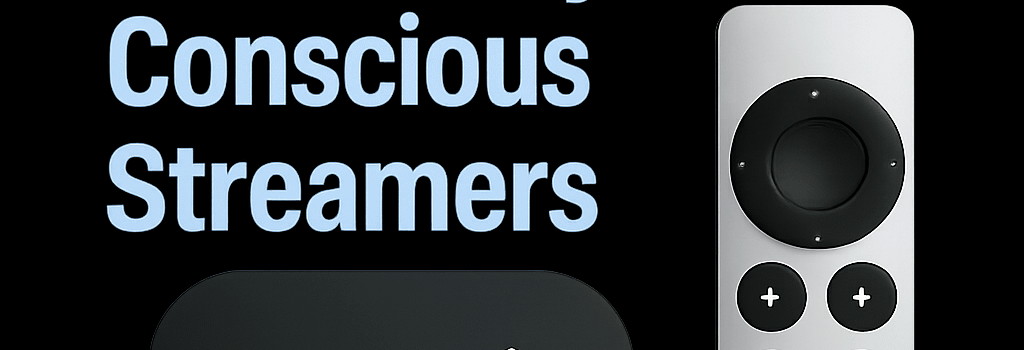Apple TV: The Best Choice for Privacy-Conscious Streamers

In an era when smart TVs and streaming sticks are under constant scrutiny for data collection and targeted advertising, Apple TV stands out as the go-to device for privacy advocates. Beyond simple marketing claims, Apple has woven privacy into both the hardware and software of its set-top boxes. In this expanded analysis, we dissect Apple TV’s privacy architecture, compare it with industry norms, and explore how upcoming OS updates and regulations may reshape the streaming landscape.
Out-of-the-Box Privacy Defaults
Streamlined Setup and Default Opt-Out
From the moment you power on an Apple TV 4K (2023) with its A15 Bionic chip and 4GB of LPDDR4X memory, tvOS guides you through privacy controls. Users can disable Siri, location services, and analytics sharing before signing into an Apple account. Voice input collection is off by default, protecting against unintended audio uploads.
In contrast, rivals often bury these toggles several menus deep. By front-loading privacy options during activation, Apple reduces the risk of unintentional data sharing by nontechnical users.
IDFA and App Tracking Transparency
Since tvOS 14.5, third-party apps must invoke Apple’s App Tracking Transparency framework to access the Identifier for Advertisers (IDFA). If a user denies permission, apps cannot correlate your viewing habits across devices. In tvOS 17 (announced at WWDC 2024), Apple strengthened enforcement with a system-level block on all unauthorized trackers, even those that attempt device fingerprinting via audio or video frame analysis.
Technical Architecture Underpinning Privacy
Apple Silicon and the Secure Enclave
Modern Apple TV models leverage ARM-based Apple Silicon, integrating a Secure Enclave coprocessor that handles encryption keys, biometric data (for continuity features), and credential storage. The Secure Enclave isolates sensitive computations from the main A15 core, preventing compromised apps from exfiltrating keys or user tokens.
tvOS Kernel Hardening and Sandboxing
tvOS is built on a microkernel variant of Darwin, featuring mandatory code signing and entitlements. Each app and system service runs in a sandbox with only the minimal privileges required. Even if a third-party app were to exploit a vulnerability in WebKit or AVFoundation, the sandbox prevents lateral movement or unauthorized access to audio streams, UI buffers, or network traffic.
Data Collection and Differential Privacy
When users consent to analytics, Apple implements local differential privacy on the device. Telemetry is anonymized by adding mathematical “noise” before transmission over end-to-end encrypted channels. Apple’s backend strips IP addresses and device identifiers during ingestion, and only aggregate metrics—such as crash rates or feature usage trends—reach product teams. According to Apple’s privacy white paper, the entire pipeline is contained within a restricted access environment, ensuring even internal staff cannot deanonymize individual records.
Apple Account Integration: Trade-offs and Workarounds
Using an Apple ID unlocks features like single-sign-on, purchase history sync, and Family Sharing. However, Apple’s Privacy Policy confirms that it collects account metadata (device list, purchase timestamps), usage patterns (app launches, search terms), and approximate location (via IP). To minimize cross-device profiling, privacy experts recommend a dedicated Apple ID for your living room, isolating your Apple TV from your iPhone and Mac.
Network-Level Protections and Best Practices
- Encrypted DNS: Configure your router or Apple TV to use DNS over HTTPS (DoH) to prevent on-network ad networks from snooping on domain lookups.
- VPN or Pi-hole: Route streaming traffic through a home Pi-hole DNS filter or a VPN endpoint to block known ad servers and ACR endpoints.
- Wi-Fi Segmentation: Place your Apple TV on a guest SSID to isolate it from IoT devices that may be less secure.
Advertising, Future Trends, and Legislative Landscape
Although Apple TV+ remains ad-free today, rumors from The Telegraph and internal hiring patterns—such as the former NBCUniversal ad head joining Apple—hint at an upcoming ad-supported tier. In July 2025, Apple met with the UK’s Barb ratings body to discuss ad tracking APIs for streaming. Should Apple enable Automatic Content Recognition in a future tvOS update, it could detect on-screen ads in competitor apps and serve targeted promotions in Apple News or Stocks.
In the European Union, the forthcoming Data Act will govern how device-generated data can be shared with third parties. By contrast, the US lacks a comprehensive framework, leaving consumers reliant on corporate policies and voluntary transparency reports.
Expert Opinions
“Apple’s privacy defaults set a new industry bar, but enforcement relies on corporate goodwill. We need more open auditing frameworks,” says Dário Maestro, Senior Legal Fellow at the Surveillance Technology Oversight Project.
“Adding ACR to existing Apple TVs would require deep integration with video frame buffers and SoC firmware. It’s far easier for Apple to ship a new hardware revision,” notes Sherman Li, founder of Enswers.
“While Apple TV is best in class today, any shift into targeted ads could erode user trust. Regulators should keep an eye on these developments,” warns RJ Cross of PIRG’s Consumer Privacy Program.
Conclusion: The Best Streaming Gadget for Privacy
For users seeking hardware that minimizes tracking—especially compared to Roku OS or LG webOS laden with embedded ads—Apple TV remains the top recommendation. Its combination of Apple Silicon security, tvOS sandboxing, default opt-outs, and differential privacy practices deliver strong protections. However, consumers should stay vigilant: ad-supported tiers, evolving privacy regulations, and server-side changes can alter the landscape. By leveraging network-level safeguards and carefully managing Apple ID usage, streamers can maintain a robust privacy posture well into the future.